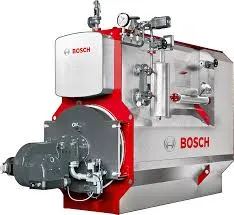
أغسطس . 14, 2024 05:43 Back to list
Exploring the Benefits and Efficiency of Steam Heat Furnaces for Modern Heating Solutions
Understanding Steam Heat Furnaces A Comprehensive Overview
In the world of heating systems, steam heat furnaces hold a distinguished place, particularly in older buildings and industrial applications. Unlike modern heating systems that primarily use hot water or forced air, steam heat furnaces deliver warmth through the distribution of steam, making them an interesting study in both engineering and historical significance.
At its core, a steam heat furnace operates by boiling water to create steam, which is then circulated through pipes into radiators placed throughout a building. As the steam condenses back into water, it releases heat, providing a warm and inviting environment. This process highlights the unique nature of steam heating—its ability to maintain a consistent and comfortable temperature with minimal fluctuations.
One of the most common types of steam heat furnaces is the cast iron boiler. These units are known for their durability and efficiency. Typically fueled by natural gas, oil, or electricity, cast iron boilers heat water in a large chamber before releasing it as steam into the connected piping system. This type of furnace is particularly effective in larger buildings due to its significant output and longevity. Many cast iron boilers have been in use for decades and, with proper maintenance, can continue to operate efficiently.
However, steam heat systems are not without their challenges. A major drawback is the slow response time in heating a space. Unlike more modern heating systems that can quickly adjust to temperature changes, steam heaters can take longer to reach the desired warmth. This can be mitigated through the use of thermostatic radiator valves, which help regulate the heat output from each radiator individually, allowing for more control over room temperatures.
steam heat furnace

Additionally, steam heating systems require regular maintenance to prevent issues such as leaks or buildup of sediment in the boiler. The water used to generate steam can carry minerals that accumulate over time, which can affect the efficiency of the system. A common maintenance practice is to drain the boiler periodically to remove these sediments and ensure optimal performance.
Despite these challenges, steam heat furnaces possess several advantages that contribute to their enduring appeal. For one, they provide a unique level of comfort that is hard to replicate with modern systems. The gentle and even heat distribution prevents cold spots and creates a cozy atmosphere. Furthermore, steam heating is often quieter than other systems, as it operates silently without the noise associated with forced air systems.
In recent years, there has been a resurgence of interest in steam heating, particularly in energy-efficient upgrades and retrofits for older buildings. Homeowners and building managers are increasingly looking for ways to improve the efficiency of their existing steam systems, integrating modern technology like smart thermostats and advanced boiler controls. These upgrades not only enhance comfort but can also lead to significant energy savings.
In conclusion, steam heat furnaces represent a captivating blend of traditional technology and modern efficiency. While they may not be as prevalent in new construction as they once were, their reliability, comfort, and nostalgic charm continue to draw interest. As we seek to balance historical preservation with energy efficiency, steam heating systems will likely remain a relevant topic in discussions about sustainable and effective heating solutions. Understanding their operation, maintenance needs, and advantages can empower users to get the best performance from this enduring heating technology.
-
Efficient Biomass Fired Hot Water Boiler | AI Heating Solution
NewsAug.01,2025
-
High-Efficiency Gas Thermal Oil Boilers | HPT Models
NewsJul.31,2025
-
Oil Fired Hot Water Boilers Sale - High Efficiency & Affordable
NewsJul.31,2025
-
High-Efficiency Commercial Oil Fired Steam Boiler for Industry
NewsJul.30,2025
-
High-Efficiency Biomass Fired Thermal Oil Boiler Solutions
NewsJul.30,2025
-
High Efficiency Gas Fired Thermal Oil Boiler for Industrial Heating
NewsJul.29,2025
Related PRODUCTS






















